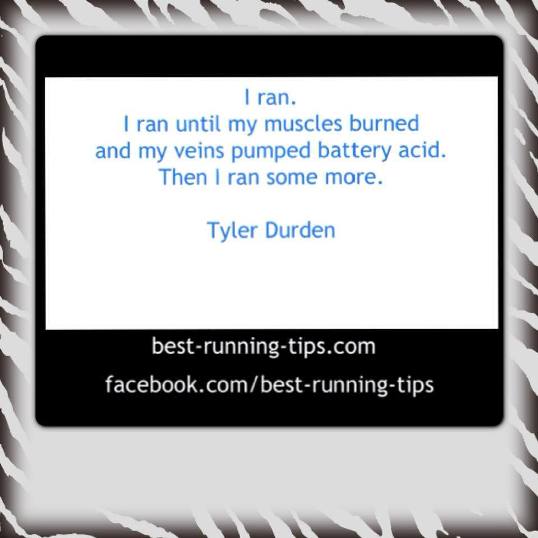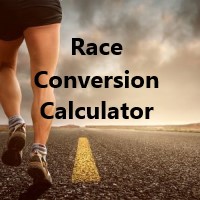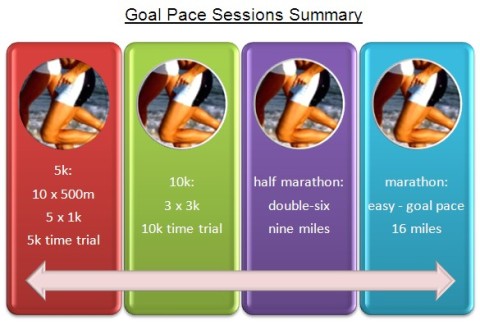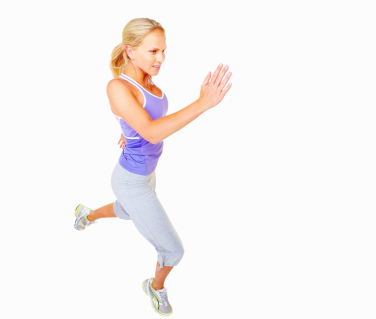Key to Success :: Goal Pace Running
When you are seriously working towards a key race, you are using a focused running program. You do your long runs, easy runs, tempo runs and intervals. Great! But something might be missing in this picture:Goal Pace Running Workouts!
In this section I'll talk about:
Why You Need to Run at Goal Speed
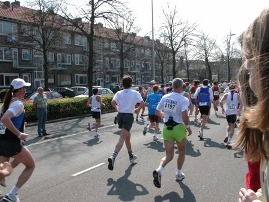 Running a
race is exciting.
Running a
race is exciting. I always get nervous in the last half an hour before a race.
Does not matter what race I am running.
I need to run to the bathroom and feel uneasy about the race.
Have I trained enough?
Suddenly I feel a little pain in my left knee or my right achilles. I stretch a bit more. Do a few strides. Join the queues to the cubicles once more.
After the race has started this uneasy feeling is gone almost immediately. I then focus on my speed. I know exactly how fast to go.
Why? Because I incorporated goal speed runs in my running schedule, of course! I know exactly how fast to go.
Many races and PB attempts are lost in the first half of a race. Why? We go out too fast. We are too eager. We get caught up in the hype of a race and start off at a high pace. We look at our watch and notice it. Then what happens? Sometimes we convince ourselves it's fine. We tell ourselves we are having a magnificent day and will be able to hold this pace for the rest of the race. Sometimes we may tell ourselves: "It's good to bank a bit of time at the start of a race.".... Inevitably, this comes to bite us in the second half, when we have to slow down...
Note that I am using "we" in the paragraph before, because it is too confronting to just write "I"... :)
I have done this in the past. Many times over. Especially when GPS watches did not exist yet and you had to run by feel. So often I was way too fast in the first part of a race and almost always paid for it dearly in the second half.
That's why goal pace running is so important. You need to get used to the pace you are running in a race, so you can get a feel for it and don't screw up your race in the first half.
About Positive, Negative and Even Splits
As you may already know, it pays off to run even splits or even slightly negative splits for longer distances.
Even splits means that you run at a steady speed per mile throughout the race.
Negative splits means that you start off a bit slower and speed up as the race progresses.
As I described above "we" often start our races too fast and burn out well before the finish line...
That's when you are doing positive splits.
Positive splits will hardly ever get you to your fastest time possible. In a marathon it is usually argued that every minute you run too fast in the first half, you'll lose five minutes in the second half.
For shorter distances, the effect is less of course, but still tangible.
Goal pace running workouts in your training will help. You'll make sure that you are able to run even splits during the race.
So you know how fast to go and don't burn out early. Or that you realize afterwards that you should have pushed it a bit more.
Other Reason for Goal Pace Running Workouts - Test Yourself
There is another incredibly good reason for goal pace sessions. Uncertain about whether you'll be able to hold your speed until the end? Then you can test yourself during training.
Suppose you want to do a 10K in 40 minutes. If you have severe troubles when performing a 5K in 20 minutes in your training, then you have got to wonder...
A race usually brings out a little extra in you. But when you can't run half the distance in goal pace your goal is likely way too ambitious.
So the second reason for goal speed running is to find out whether you are ready for your goal race or not.
Goal Pace Running Workouts for Different Distances
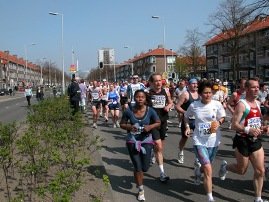
I'll give you a few different ideas for goal pace running.
We'll cover a few different distances.
For many people I have seen that these are great predictors. They are great workouts in their own right. And get right to the heart of the specificity principle - your training needs to be specific to the thing you want to accomplish.
Generally you can break these goal pace running training routines up into different groups:
Before you continue: do you have a clear goal in mind for your next race? If not, consider using the following pages to work things out:
5K Goal Pace Running
Ten 500-metre repeats
For me, this one is a powerful indicator. But, as I said before, you have got to find out for yourself if this works for you.
Run 500 metre-repeats at goal speed. Walk or jog for 45 seconds in between. Repeat ten times. You can run all repeats at goal pace? Then you are probably ready for your 5K!

Five 1k Repeats
Same idea as before, but better: do five 1k-repeats with a short break in between (e.g. 45 sec - 90 sec). Able to do it?
Then your 5k goal is definitely possible!
Why better? The longer that goal pace interval becomes, the tougher the challenge to keep the pace. Running 5 x 1k is much harder than 10 x 500m at goal pace.
5K Time Trial or Test Race
The 5K is a short enough distance to run the complete distance in training at goal pace.
Just do a 5K as fast as you can in training.
See if you reach your goal or get close to it.
This type of training, a time trial, is tough though.
You don't have others around you to help you keep your speed.
And it's easy to give in to the tiredness without the stimulation of a real race.
That's why you might be better off putting test races in your running schedule.
If you are in the middle of a tough training program your legs will be fatigued at test-race day. You will most probably not be able to maintain your goal pace the whole race.
But just go out at your goal pace and see how long you can maintain it. No worries if you crash and burn. This is your test race!
If you already feel like you can't go anymore after 1 mile, then you might be a long way from your goal. But if it happens in the last mile before the finish, then there is a good chance that with a bit more quality training, a good taper and fresh legs you'll be able to finish your key-5K at the desired speed.
10K Goal Pace Running Workouts
Three 3K-repeats
This is a toughie, especially in loaded training weeks. But when you can do this one, you are close to being able to run your 10K in your desired time. So do three 3K-repeats with a 1.5 minute jog in between. After this training, put in a few easy days.
Also, please do not leave your goal speed sessions to the last week before your goal race. Try to to do them three to five times in the four to six weeks leading up to a key race to get a feel for the pace.
Alternative goal pace workouts that you could use in the lead-up to 3 x 3k are 8 x 1k and 4-5 x 2k.
10K Time Trial or Test Race
As with a 5K time trial, it might be easier for you to schedule in test races. See what works best for you.
A time trial is a bit more convenient to find time for. You can do it any time, any day. But it is a hell of a lot tougher to keep your pace when there is nobody around you. It is definitely not something I do.
I can do a 5k time trial on my own and race my heart out. It is short enough to keep the pace. But a 10k is too long for me.
To just run at this uncomfortably hard pace for 40 minutes or so, is very tricky in non-race conditions.
Half Marathon Goal Pace Running
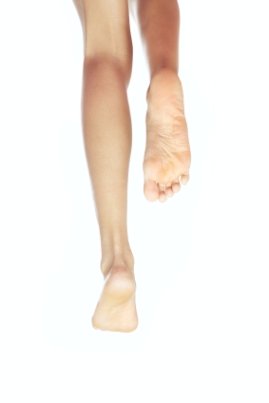
Double-Six
Time to introduce some of my own lingo. This one I call the Double-Six.
First run six miles at an easy pace.
Then run six miles at goal speed.
Why do six easy miles first?
Well, you see, the trick is that when you start doing your goal pace miles when your legs are already a bit tired.
If you can maintain the pace for mile 7-12 with already tired legs, then you can feel pretty confident about making it to your goal.
One prolonged effort
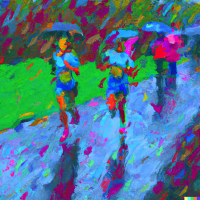
Able to run 70 % of race distance at goal speed? Then, with your extra "race day powers", you should have a good chance of being able to run the full race at goal pace.
A third option for the half that has worked for me in the past, although it is not technically goal pace running, is to see if you can run 12 miles at goal pace + 15 sec/mile (goal pace + 10 sec / km). Able to do that? Then you are probably good to go for your half marathon goal time!
Marathon Goal Pace Running Workouts
The longer your race gets, the more important it is that you go out at race pace. Not faster.
It is often said, that for every minute you gain in the first miles of the marathon, you lose five minutes in the last miles.
In a 5k you can chance things a bit more. You can go out aggressively, then hang on for dear life, maybe slow down (and die) a little bit during the last mile... But knowing what you can and cannot do is of utmost importance when running the marathon.
And, maybe even more than with other distances, goal pace running, is an incredibly vital component of marathon training when you are intending to really race the marathon. Think about it. You will have to ready yourself for 26 x 1 mile at goal pace or 42 x 1k at goal pace. That's a lot. So, you want to get very familiar with goal pace running and build up the experience with running at goal pace for longer periods of time.
With marathon goal pace running, we have basically three types of goal pace sessions at our disposal:
Easy, Then Goal Pace
For a while we were lured in believing that the LSD = long slow distance run, was the key to marathon success. It is definitely very important. But even more important is the long run with a fast finish.
So start off slow, but for the last five to eight miles pick up the pace.
As with the half marathon workout, key is that you run goal pace miles when your legs are already tired.
One Prolonged Effort

But we can learn from the elites and at least try to do some longer runs at marathon pace when preparing for a marathon. Build up these long runs to about 15-16 miles in length. They'll give you a good training at maintaining your pace for a long, long time.
And it is generally believed, that if you are able to run 16 miles at goal pace, you'll be able to run your marathon at goal pace.
Intervals at Marathon Pace
Clearly, to work up to the one long prolonged effort as described before, you can use intervals to get you ready for them. You could start by making every second mile in your long run at marathon pace, then slowly build up to something like 3 x 4 miles at goal pace in your long runs.
Goal pace running is an important part of your running program. Yes, you focus pretty much all your training on the traditional running training; your long runs, easy runs, tempo runs, and intervals.
But towards your goal race you will want your running training to become more specific. That's when you start incorporating a goal pace workout per week.
After all, running at goal pace is a very good way to make sure that you find your right pace when race day comes and that you'll be able to hold on that pace for the whole race!
Home > Running Training > Goal Pace

